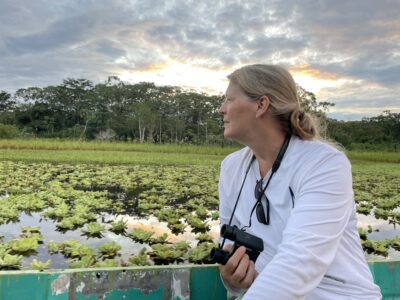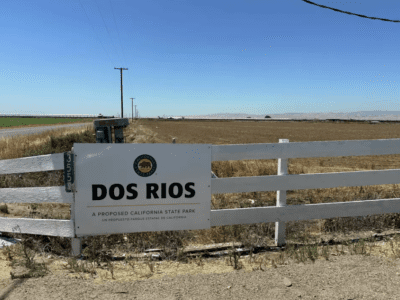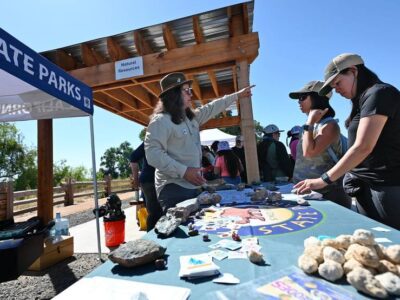By Brooke Jarvis

Excerpt:
“I see it as replumbing California for the future climate,” said Julie Rentner, director of the conservation nonprofit River Partners. It was a bright, chilly day near Modesto, and Rentner was showing me some farms that were once typical of the Central Valley: laser-leveled fields sown in alfalfa and wheat. On that day, though, the land looked more like the valley of a couple of centuries ago. The San Joaquin and Tuolumne Rivers had broken their banks and flooded the fields — which were no longer fields so much as copses of carefully planted trees and other native plants sitting four feet deep in water. Everywhere there were birds; a river otter darted across the top of a levee. Six months earlier in this spot, Rentner told me, you could “ankle wade” across the San Joaquin, a river once fed by the waters of Tulare Lake, back when the lake was sometimes high enough to overflow its banks. Now a little rill of wavelets across the surface of the flood was the only thing that marked the river’s usual borders.
This land had flooded before, most notably in 1997, when levees broke in 17 places. River Partners later worked to buy the farmland from its frustrated owners, hoping to turn it into habitat for threatened native species. But soon, Rentner said, the group started hearing from flood-management people and groundwater-recharge people who were excited about how many different benefits a reimagined version of the property could provide for the state and for local residents, who had little access to natural spaces. The restoration project at the confluence of the two rivers, known as Dos Rios, appeared on the cover of the most recent Central Valley Flood Protection Plan, a template of what was possible. It is slated to become California’s newest state park.
In Grayson, a town near Modesto that came close to flooding in January, a group of residents explored a different floodplain, where high waters now lapped against yards at the town’s edge, that River Partners is helping to restore. John Mataka, who has lived in Grayson for almost 50 years, told me that he considers the restoration “a form of reparations for the community.” The San Joaquin, on which Grayson was once a stop for steamboats, supported a rich salmon fishery before dams and agriculture transformed the river. Today Grayson depends on groundwater, but the water supply has so much agricultural runoff that it requires advance treatment to meet safety standards for drinking. Mataka hoped that the restored floodplain would provide more and cleaner water. He was convinced that it had already protected his house from recent floodwaters that had entered the town. “We would have been like Planada,” he said.




